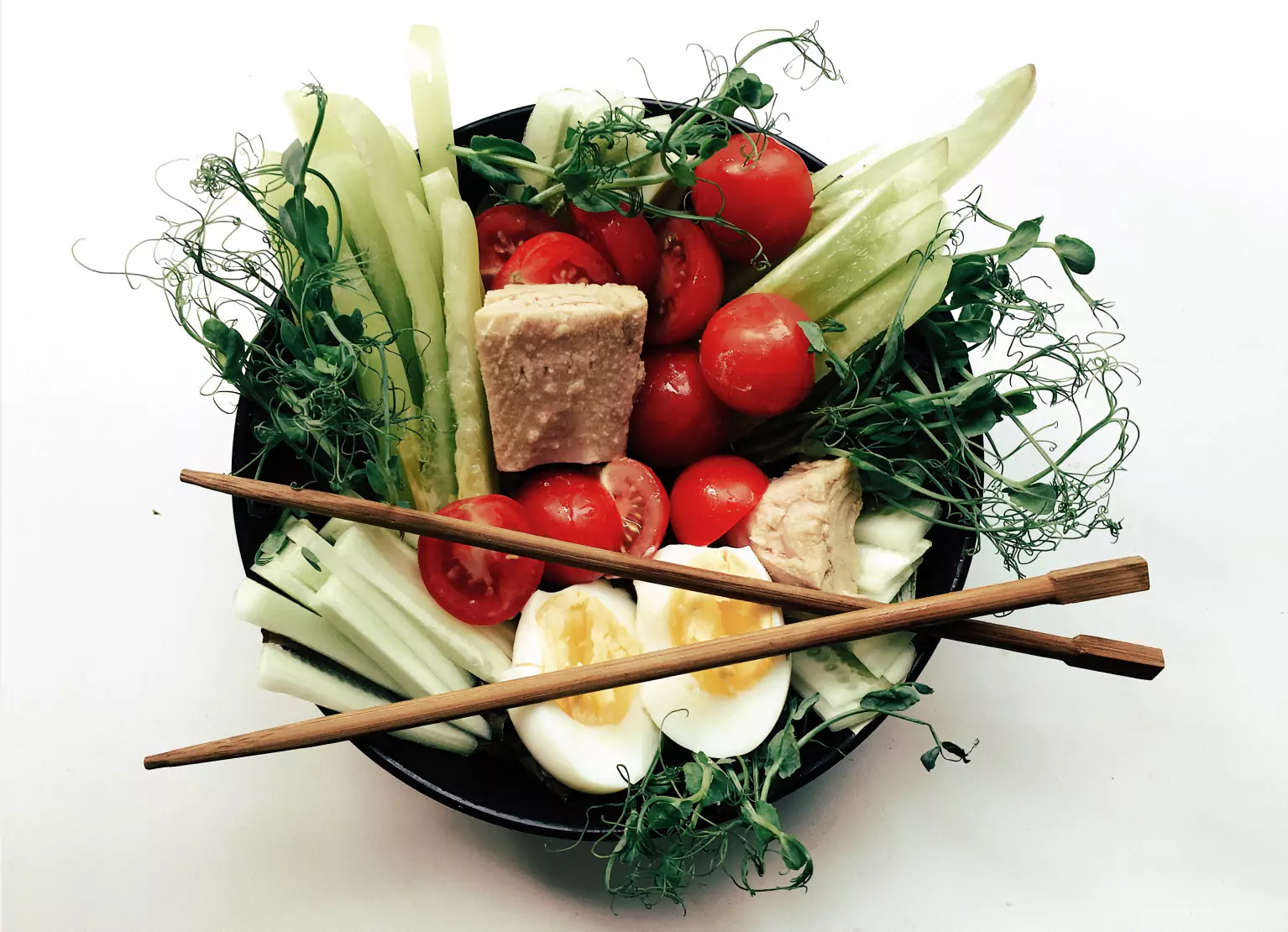Is Inflammation Good For Muscle-Building?

Key Takeways
The term inflammation has a strong negative connotation, especially when it comes to your health—and for good reason. Inflammation is the immune system‘s response to harmful stimuli, and though in the short term this inflammation can protect the body, long-term inflammation can lead to tissue damage, and negative effects on metabolism and overall health.
Other health effects that stem from chronic inflammation can include poor glucose control, high cholesterol, and increased risk of chronic diseases like heart disease, Alzheimer‘s disease and atherosclerosis.
Due to these possible risks, it may be hard to wrap your head around the idea that inflammation could even be considered a good thing for some bodily processes in certain cases.
Could inflammation be an example of such a response? In fact, could inflammation actually be a good thing when it comes to building muscle? Read on to find out.
A Primer on Acute and Chronic Inflammation

In our previous article on the effects of inflammation on blood glucose, we broke down the differences between chronic and acute inflammation. In case you need a refresher, let’s quickly go over the main differences between the two and what their functions are.
Chronic Inflammation
When people talk about the harmful effects of inflammation, they’re usually referring to chronic inflammation.
This type of inflammation is often associated with autoimmune disorders such as rheumatoid arthritis, and can even lead to conditions like cancer, cardiovascular disease, type 2 diabetes, heart attack, and obesity.
Chronic inflammation can also lead to negative health effects such as:
- Elevated levels of harmful molecules called reactive oxygen species (or ROS). Free radicals are an example of ROS.
- Increased blood glucose levels
- Decreased insulin sensitivity
- Gut issues like leaky gut (or intestinal permeability)
- Decrease in muscle mass
Acute Inflammation
Acute inflammation, on the other hand, is a normal immune response. In fact, this type of inflammation actually is beneficial to your health and can support processes such as muscle growth.
When you get sick and your body encounters a pathogen, it produces an inflammatory response by releasing pro-inflammatory cytokines. This type of short acting inflammation sets off a cascade that fights the infection, however these proteins can become harmful when the body has too many, which can lead to inflammatory diseases.
In times of stress, your body will also produce some inflammation which can increase blood flow and help the body to fight off stressors.
However, in modern life, stressors have become things most of us tackle on a daily basis, and this has caused our stress and inflammation to become chronic.
Inflammation and DOMS

In our post about recovery breakfasts for DOMS (or delayed onset muscle soreness), we discussed the relationship between muscle soreness and molecules called growth factors. As the name suggests, these molecules can help your muscles grow and are related to inflammation.
While muscle soreness does not always equate to muscle growth, there is some evidence suggesting that DOMS-related muscle growth is connected to inflammatory pathways to some extent.
Inflammation, ROS, and Muscle Growth
ROS (or reactive oxygen species) can increase muscle force and help muscles adapt to exercise. As a result, muscle growth is generally connected to ROS, since exercise can increase levels of these molecules in the body.
While high levels of ROS can damage muscle and decrease performance of muscles, other research suggests that low levels of ROS are required for increasing skeletal muscle force and adaptation.
A study done in mice suggested that inhibiting ROS production actually prevents the body from repairing the damage to the muscle fibers, a crucial step in the muscle building process. So, even though having high levels of ROS over a long period of time is detrimental to health, low levels of these molecules (in acute phases) appear to be necessary for optimal muscle growth.
Where Antioxidants and Anti-inflammatory Foods Factor Into Muscle Growth

Because of the role that inflammation, specifically ROS, plays in muscle growth and performance, is it possible that anti-inflammatory foods or inflammation-reducing antioxidants can work against muscle growth?
Anti-Inflammatory Foods
Eating a diet rich in anti-inflammatory foods has been observed to support greater muscle mass and improved muscle function over time. Diets such as the Mediterranean diet are often rich in anti-inflammatory foods such as olive oil, leafy greens, legumes, nuts, fruits, vegetables, and foods rich in omega 3 fatty acids.
Anti-inflammatory diets should limit the consumption of things like refined carbohydrates such as white bread, deep fried foods, and items high in trans fats. Increased consumption of these foods in the diet may lead to irregular levels of pro-inflammatory cytokines in the body, which has been linked to loss of muscle mass.
Curiously however, research on the use of anti-inflammatory drugs for muscle soreness has shown that taking a nonsteroidal anti-inflammatory drug (NSAIDs) such as ibuprofen over an extended period of time reduced hypertrophic muscle growth as compared to a control group of healthy individuals who did not take any drugs.
Antioxidant Intake for Optimal Muscle Growth

Research suggests that in order to support muscle growth, it‘s best not to consume high amounts of antioxidants hours following exercise. This is especially true after high-intensity exercise, as antioxidants may impair healthy levels of ROS in the body.
Because most micronutrients have antioxidant properties to some degree, it’s impossible to avoid antioxidants all together. Instead, you’ll want to focus on eating balanced meals that are rich in protein.
Consuming protein before or after your workout has been found to have similar effects on muscle growth, but you should make sure to follow dietary guidelines or an amount recommended by your nutritionist following exercise.
When Not to Take Antioxidants For Muscle Growth
Antioxidants, such as high dose supplementation of vitamin C (1000 mg/day) and vitamin E (400 IU/day), can also inhibit some positive effects of exercise, such as improved insulin signaling and vasodilation.
Keep in mind that the recommended dietary allowance for vitamin C is 90 mg/day for men and 75 mg/day for women, and the recommended dietary allowance vitamin E for men and women above 14 years is 15 mg daily.
High Intensity Training and Antioxidants

Negative effects of antioxidants are especially applicable to high intensity exercise, with several studies suggesting that ROS is necessary and plays a critical role in muscle growth and repair after HIIT exercise.
Antioxidant-rich drinks such as cherry juice were once believed to be beneficial in supporting muscle growth after high intensity or endurance exercise, however new research has now shown that it may not be optimal during the muscle adaptation or growth stage of training.
Another study on antioxidant supplements further supports findings that antioxidants do not have a positive effect on exercise-training adaptations.
Thus, even though it may be tempting to reach for these nutrients, if you want optimal muscle growth, it’s best not to consume high amounts of antioxidants for muscle growth. Instead, a good rule of thumb is to stick within the recommended dietary allowance of antioxidants and eat a whole foods focused diet.
How to Prevent DOMS Without High Antioxidant Intake

Just because high antioxidant intake following exercise isn’t ideal for muscle growth doesn’t necessarily mean you have to tolerate DOMS for the sake of muscle building. There are several ways to prevent DOMS beyond just taking antioxidants.
- Do small amounts of isometric contractions or exercises two weeks before a new or intense workout. Examples include plank, squats, and glute bridges.
- Introduce any new workouts or activities slowly over one or two weeks to allow your body enough time to adjust to the new movements.
- Consuming adequate protein, omega-3s, polyphenols, and caffeine around the time of training have all been observed to reduce DOMS without affecting muscle growth or adaptation.
Sarcopenia and Antioxidants
Some studies suggest sarcopenia, or age-related muscle loss, is associated with elevated levels of ROS. This isn’t all too surprising considering that high ROS levels can actually be damaging to muscle growth and function.
Increased age often means increased ROS production. This increase in ROS levels leads to muscle atrophy, or shrinkage, and reduced muscle function.
In such cases, ensuring you’re getting adequate amounts of antioxidants as part of a whole foods diet may be helpful in preventing age-related muscle loss.
You may want to discuss whether consuming the upper limit of the dietary allowance of an antioxidant can be beneficial for sarcopenia with your nutritionist.
Find the right Nutrisense programto turn insight into progress.
Go Beyond Glucose Data with Nutrisense
Your glucose can significantly impact how your body feels and functions. That’s why stable levels are an important factor in supporting overall wellbeing. But viewing glucose isn't enough. Nutrisense, you’ll be able to learn how to use your body's data to make informed lifestyle choices that support healthy living.
One-to-one coaching
Sign up to access insurance-covered video calls to work with a glucose expert: a personal registered dietitian or certified nutritionist who will help tailor your lifestyle and diet to your goals.
Monitor and measure what matters
With the Nutrisense CGM Program, you can monitor your glucose with health tech like glucose biosensors and continuous glucose monitor (CGM)s, and analyze the trends over time with the Nutrisense App. This will help you make the most informed choices about the foods you consume and their impact on your health.
Find your best fit
Ready to take the first step? Start with our quiz to find the right Nutrisense program to help you take control.

Jordyn has a bachelor’s degree in biology, a graduate degree in Human Nutrition and completed a dietetic internship at the Memphis VA. She's a dietitian at Nutrisense, and has experience working as a clinical dietitian at a VA medical center specializing in oncology and at the Mayo Clinic, working with a wide range of patients ranging from neonates in the NICU to adult ICU.




